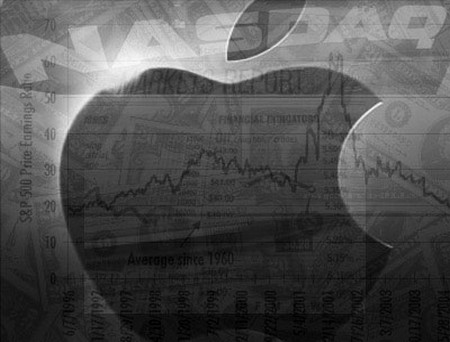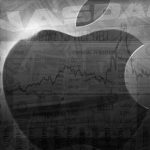Critics: Apple Has Nothing Under Construction
Following Apple’s iPhone Event last Tuesday, September 10th, the Pundits – echoed by the stock market – have been relentlessly critical of Apple’s iPhone 5C pricing strategy. Investors have driven Apple’s shares down more than 10% since last week’s event. Snippets from some of the commentary:
(Author’s note: You don’t have to read every snippet. But you might want to re-read them after I’ve made my point.)
- (A) common theme emerges: Apple should have used the device to establish a new iPhone price band low enough to drive growth in big, price-sensitive markets like China. But it chose not to, essentially doubling down on the market’s increasingly more saturated higher end, and protecting its high margins. And, in doing so, it has — for the time being — forfeited the market’s massive not-at-all-saturated lower end to Android. ~ Source
- “(Innovation) has slowed down,” said Laurence Balter, chief market strategist at Oracle Investment Research, when asked about innovation at Apple. ~ Source
- (I)nvestors and consumers alike are wondering if innovation is truly stalled without the late co-founder Steve Jobs at the helm. ~ Source
- Jobs is believed to have left Apple with a pipeline of product plans and new ideas, but the longer we get from his passing, and the longer it takes for those products to come out, the more investors may question their existence. ~ Source
- In his (biography of Steve Jobs), Isaacson wrote that Jobs left Apple a pipeline of innovative products for several years. “We are not seeing them yet,” Isaacson said. ~ Source
- Indeed, (what they’ve shown us is) not an innovation at all, but merely a refinement and systematic roll-out of an old idea…. ~ Source
- Many expected chief designer Jony Ive to carry Jobs’s visionary torch, but so far, it’s not clear if he has the equivalent vision.” ~ Source
- “The C in 5C does not mean ‘cheap’ as I had hoped. It means clueless, as in clueless about how the vast majority of new smartphone users are paying for their phones.” ~ Fred Wilson
- “Just how far behind is Apple trying to fall? I do not get Tuesday’s release and product launches. Something is just wrong,” Doug Kass of Seabreeze Partners Management said in a note Wednesday. Customers in emerging markets are price-sensitive and want a lower-priced phone, but the iPhone 5C — or “iPhone dud,” as Kass describes it — won’t be cheap enough to drive market share gains that could lead to earnings growth.
- “I think (Steve jobs) would have abhorred plastic, he would have thrown that out the window,” said Balter.” ~ Source
- “Maybe we should call him ‘Timid Tim,’” Troy Wolverton writes for The San Jose Mercury News. “As Tuesday’s iPhone event showed yet again, Apple under CEO Tim Cook is anything but bold,” Wolverton writes.
- (Cook) has demonstrated a spectacular lack of imagination as to how to spend Apple’s riches. ~ Source
- What (the pricing policy) doesn’t represent is any clear answer about where Apple goes when that engine finally runs out of fuel. ~ Source
- People keep believing there will be a “next big thing” at some point, but the fact is there is no next iPhone, at least in terms of the amount of value it has created in such a short time. ~ Source
- (Apple) seems to have no idea what to do with that embarrassment of riches except to try to grow it just a bit more and that isn’t a strategy, it’s score keeping. ~ Source
- Apple is suffering a classic case of The Innovator’s Dilemma. It invented the modern smartphone, profited wildly, and is watching the industry change beneath it. But it can’t seem to do anything about it except try to wring out as much profit from the existing business model as possible. ~ Source
- It’s hard to be the one to kill your own golden goose and it’s much harder to know when the right time to do that is, but increasingly it feels like the time has already come for Apple. ~ Source
- In the end, Cook chose to spare the golden goose. But the goose will eventually be cooked. Whether the CEO has a plan for that remains to be seen. ~ Source
- These days, Apple is more like a fashion label than an electronics company….Apple is becoming more like Prada and less like Edison. ~ Source
- Some are questioning how much more innovation is really even possible in smartphones right now. Scott McGregor, CEO of Broadcom Inc. BRCM +2.45% said a few weeks ago in a press round table discussion that he believed innovation in smartphones had stalled. ~ Source
Pop Quiz #1
Who said:
“If you’re long-term oriented, customer interests and shareholder interests are aligned.”
See answer, below.
How Construction Works And How Construction Looks To Outsiders
(I)t’s worth noting that Apple’s strategic choice is confounding for another reason. Consider the lucky man who builds a great business and finds himself wealthy beyond imagination. He builds a grand palace overlooking the ocean. Over time, though, he realizes the cliffs are eroding beneath his palace. He could do something radical, like move his palace to higher ground or spread his real estate holdings across many different regions. Instead, he chooses to buy some new carpet and repaint. ~ Mark Rogowsky
Really, Mark? Apple’s just been sitting on its hands, not doing any additional construction? If that’s what you think, then it is no wonder that you’re confounded. Let’s take your analogy and run with it, shall we?
 In construction, there are roughly five phases: ((There are, of course many phases, which use many names. This is just one variant.)) Foundation, Framing, Rough-In, Close-In and Finish.
In construction, there are roughly five phases: ((There are, of course many phases, which use many names. This is just one variant.)) Foundation, Framing, Rough-In, Close-In and Finish.
Foundation: Easy to see progress. Big earth movers come in, dig out the foundation and block is laid.
Framing: Also easy for outsiders to see progress. The outline of the building quickly rises atop the foundation.
Rough-In: At this point, if you’re watching the construction, you may feel that everything has come to a screeching halt. This is when the water, electric, sewer, etc, is connected to the house. Much of the work is done underground and all of it is nearly invisible to the outside observer.
Close-In: After the Rough-In is completed, the house is “closed-in” – made watertight – and the interior infrastructure, such as air and heating ducts, electrical wiring, plumbing, etc. is added. This phase is frustrating to watch too. Although lots and lots of work is going, to the casual observers, it seems like little is happening.
Finish: Now we’re talking. Lots of action and lots to see. The floors go in, the drywall goes up, there’s spackling and painting and the cabinets and tubs, etc. are put in. Lots or motion, lots of changes, lots of progress for the casual observer to readily appreciate.
Mark Rogowsky, and the other pundits, are claiming that Apple is idly watching the metaphorical ground beneath its business being washed away while taking no more action than to “buy some new carpet and repaint.” I think this is a childish claim that blatantly ignores the known facts. Apple is doing lots and lots and lots of new “construction” to their business, however, to the casual observer, the construction appears to have come to a grinding halt because Apple is currently moving from the “Rough-In” phase of the construction to the “Close-In” phase. But just because the casual observer cannot SEE a lot of activity does not mean that Apple has not been active. On the contrary, the savvy observer can clearly see that Apple – like any good construction company – is quietly installing the infrastructure necessary to support a huge additional build-out.
Pop Quiz #2
Who said:
“We are willing to think long-term. We start with the customer and work backwards. And, very importantly, we are willing to be misunderstood for long periods of time.”
See answer, below.
Close-In
So, what kind of infrastructure (mostly hidden from the public eye) has Apple been putting into place recently? Well, contrary to common belief, there’s been a LOT of activity, so let’s just list it in alphabetical order.
Appearances often are deceiving. ~ Aesop
A7 Processor:
— “Desktop class architecture”
— Speed to spare, and hard to catch from behind.
While Samsung was going for brawn w/ 8 cores, Apple went for brains w/ 64-bit. ~ Adam J. Reid (@read_reid)
No one else can go 64-bit any time soon because the backward compatibility tax is too large to support. ~ Steve Cheney (@stevecheney)
It will be amazing to see what developers do to take advantage of 64 bit and create new class of applications. ~ ßen ßajarin (@BenBajarin)
Apple TV:
— Not the one that exists today, but the the one that is yet to come; the one powered by the new A7 chip, running iOS and using the new gaming controls (see “Games”).
Bluetooth:
— Bluetooth Low Energy (BLE), a technology that has been in Apple laptops since 2011 and in all phones since the iPhone 4S. Apple simply throws a switch, and 200 million users are good to go — no waiting for NFC chips.
Carriers
— DoCoMo: Biggest carrier in Japan
— China Mobile: Biggest carrier in world
— ‘Nuff said.
Cases:
— “Cases?”, I hear you say. “Cases aren’t innovative. Well, just chew on the following data a bit before you make a final decision on that point:
Apple’s case for the iPhone 5S: $39 For the 5C: $29 Nokia’s average selling price for feature phones: $34 ~ Benedict Evans (@BenedictEvans)
Enterprise:
Forrester jumping on the “5S will be a big deal for business” bandwagon (I’m the driver) ~ Ben Thompson (@monkbent)
Free Software:
— iOS 7, All five iOS iWork and iLife apps, iWorks and iLife in the Cloud, (and possibly OS X Mavericks, too) all free.
Games
— Apple’s big bet on iOS 7 gaming
iBeacons:
— With iBeacon, Apple is going to embrace the internet of things.
— Bluetooth Low Energy support in the form of iBeacons. An announcement that might well start a little revolution, not so much because Apple invented it (in fact they did not…) but because iOS support of any protocol that more of less makes sense usually ends up in a drastic uptake of its usage, and this particular protocol happens to really make sense.
— Replacing NFC
— Indoor applications for iBeacons
iPhone 5C Product Placement:
— For all intents and purposes, Apple’s mainstream iPhone (the iPhone 5C) just dropped in price by $100.
What exactly did Apple just do? Amongst other things, halved the US price of the iPhone. ~ Benedict Evans (@BenedictEvans)
— You can’t market a one-year-old phone. Apple is already marketing the begeezus out of the iPhone 5C.
The 5C to me seems more like a play at not making the iPhone 5 feel like the “old version.” Which could work brilliantly ~ Abdel Ibrahim (@abdophoto)
— The iPhone 5C is to the MacBook as the iPhone 5S is to the MacBook Pro. The former is the company’s standard, the latter is company’s premium offering.
Does anyone really think typical consumers will see a blue iPhone 5c in store & say “oh, it’s just last year’s chipset in a new enclosure”? ~ Benedict Evans (@BenedictEvans)
iOS 7:
“The vivid realization of hardware and software together in one device.”
iTunes Radio:
— Pandora’s box might have just been slammed shut.
M7 Coprocessor:
— M7 knows when you’re walking, running, or even driving. The combination of the M7 and iBeacon promises richer contextual computing.
Apple co-opting wearable tech by putting the … sensors into the phone. ~ Benedict Evans (@BenedictEvans)
Apple saw a job to be done around fitness so they did the only sensible thing: designed and built a new chip, the motion coprocessor. ~ Horace Dediu (@asymco)
Maps:
Around this time a year ago, Tim Cook wrote a letter to Apple’s customers apologizing for Maps. Exactly a month later, Apple announced a major executive reshuffle. Forstall resigned. Jony Ive took charge of Human Interface in addition to Industrial Design. A new Technologies group was created, led by Bob Mansfield, who returned from retirement. Federighi and Cue took over additional responsibilities as well.
Failure is success if we learn from it. – Malcolm Forbes
Mac Pro:
— Over the top power.
OS X Mavericks
— Pending…any day now…
Passbook
— Mobile payments — The Holy Grail of eCommerce.
Passbook seems like a good way to extend finger scanner to 3rd parties. Controlled, no 3rd party code. ‘Unlock this pass with your finger’ ~ Benedict Evans (@BenedictEvans)
Touch ID:
— The foundation for customer convenience, personal privacy, enterprise and government security, in-person and on-line payments, and more.
The above items are the building blocks for Apple’s future. They are the equivalent of the infrastructure – ducts and the pipes and the electrical wiring – that is the very blood and guts of a new home.
Apple has not been idle – far from it. They’ve been patiently laying the groundwork for a whole new Apple, one built on a whole new foundation.
Pop Quiz #3
Who said:
“Invention requires a long-term willingness to be misunderstood. You do something that you genuinely believe in, that you have conviction about, but for a long period of time, well-meaning people may criticize that effort. When you receive criticism from well-meaning people, it pays to ask, ‘Are they right?’ And if they are, you need to adapt what they’re doing. If they’re not right, if you really have conviction that they’re not right, you need to have that long-term willingness to be misunderstood.”
See answer, below.
Finish
A building has integrity just like a man. And just as seldom. ~ Ayn Rand
What will Apple’s construction look like when it’s finished? It’s always hard to tell during the Close-In phase, and it’s even harder to tell when one is looking on from the outside, as we are. So I make no promises.
PATIENT: Doctor Doctor, will this ointment clear up my spots?
DOCTOR: I never make rash promises!
However, I – and anyone who has been truly paying attention – can tell you that Apple is slowly, methodically, painstakingly, laying the foundation for the next stage of their existence. To think or say otherwise is simply wrong-headed.
There are no shortcuts to any place worth going. ~ Publilius Syrus
Conclusion
No innovation at all…Tim Cook has demonstrated a spectacular lack of imagination as to how to spend Apple’s riches…Apple has no answer about where to go when the profit engine finally runs out of fuel…There is no next iPhone…Apple is watching the industry change beneath it, but can’t seem to do anything about it…One wonders how much more innovation is really even possible…
Really? Seriously? Honestly?
Are the pundits watching the same Apple that you and I are watching?
Things happen fairly slowly, you know. They do. These waves of technology, you can see them way before they happen, and you just have to choose wisely which ones you’re going to surf. If you choose unwisely, then you can waste a lot of energy, but if you choose wisely it actually unfolds fairly slowly. It takes years. ~ Steve Jobs
Based on the available evidence, which seems more likely: Apple has stopped working on innovating or the pundits have forgotten how innovation works?
Worldly wisdom teaches that it is better for reputation to fail conventionally than to succeed unconventionally.’ — John Maynard Keynes, The General Theory of Employment, Interest and Money.
The pundits want Apple to fail in the conventional way (like Microsoft, and so many other tech companies have). Apple has a different idea in mind. They want to succeed in an unconventional way.
Apple believes in the “Noah” rule.” ((Predicting rain doesn’t count; building arks does. ~ Warren Buffett)) While the pundits are spending their time predicting rain, Apple is spending their time building an Ark.
Pop Quiz Redux
Who said:
“If you’re long-term oriented, customer interests and shareholder interests are aligned.”
“We are willing to think long-term. We start with the customer and work backwards. And, very importantly, we are willing to be misunderstood for long periods of time.”
“Invention requires a long-term willingness to be misunderstood. You do something that you genuinely believe in, that you have conviction about, but for a long period of time, well-meaning people may criticize that effort. When you receive criticism from well-meaning people, it pays to ask, ‘Are they right?’ And if they are, you need to adapt what they’re doing. If they’re not right, if you really have conviction that they’re not right, you need to have that long-term willingness to be misunderstood.”
Answers:
1) Jeff Bezos
2) Jeff Bezos
3) Jeff Bezos
Surprised? The pundits love Jeff Bezos. Why don’t they love Apple? Apple is following Bezos’ advice to a “T”.
Pompous Premature Postulations And Predictions Are The Pontificating Pundits’ Purpose And Purview
A PUNDIT walks into a bar and starts drinking quite heavily. After a while he starts bothering the barman, (who happens to beTim Cook), about the air-conditioning – first he asks for the air-conditioning to be turned up because it is too hot, then he asks for it to be turned down because it is too cold. This goes on for a couple of hours. To the surprise of others, the barman is very patient, walking back and forth and being very accommodating. Finally an observer asks, ‘Why don’t you just throw him out?’
‘Oh, I don’t care,’ says Tim Cook with a grin.
‘We don’t actually have an air-conditioner…
Tim Cook is ignoring the pundits’ constant griping. We should too.



